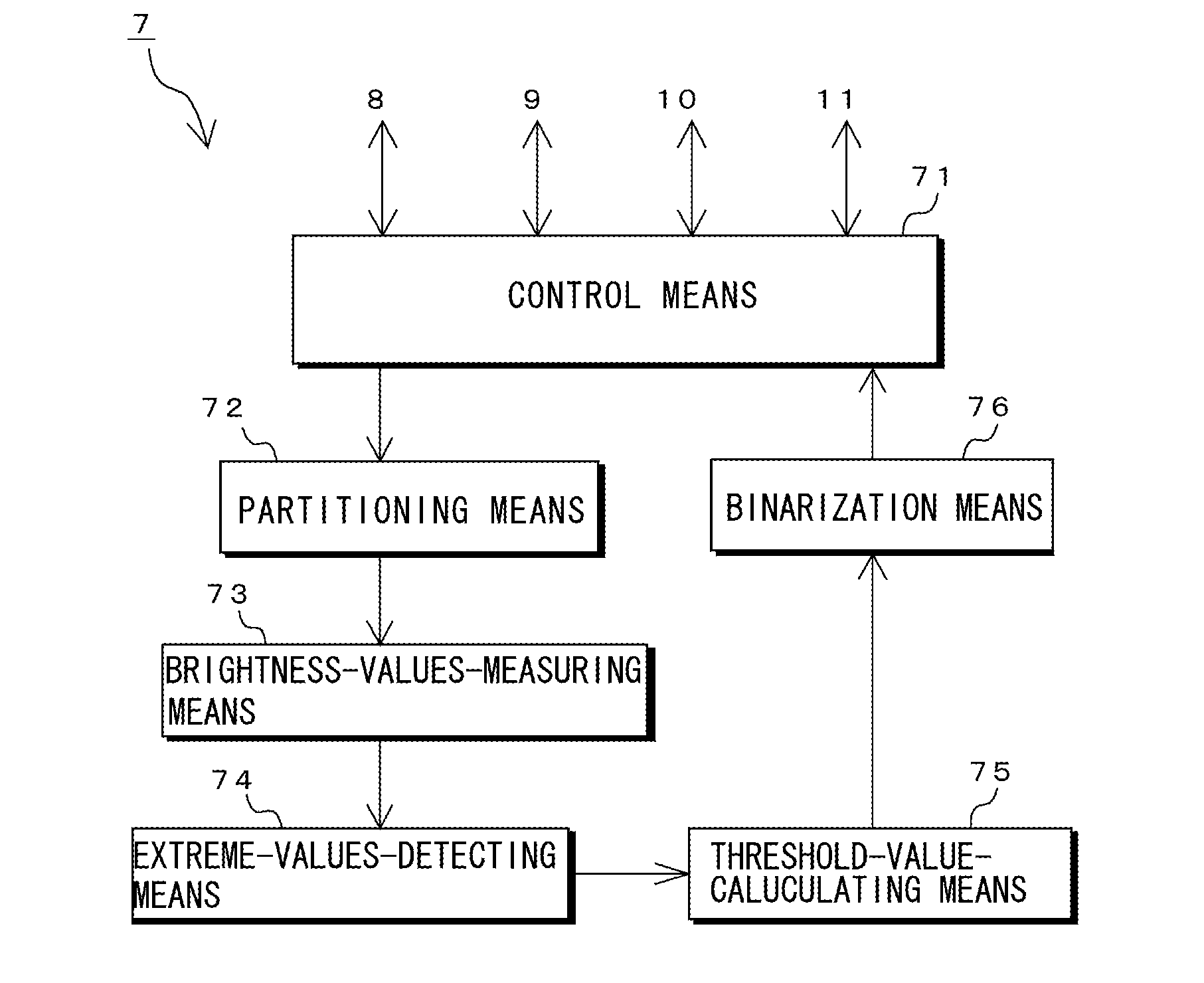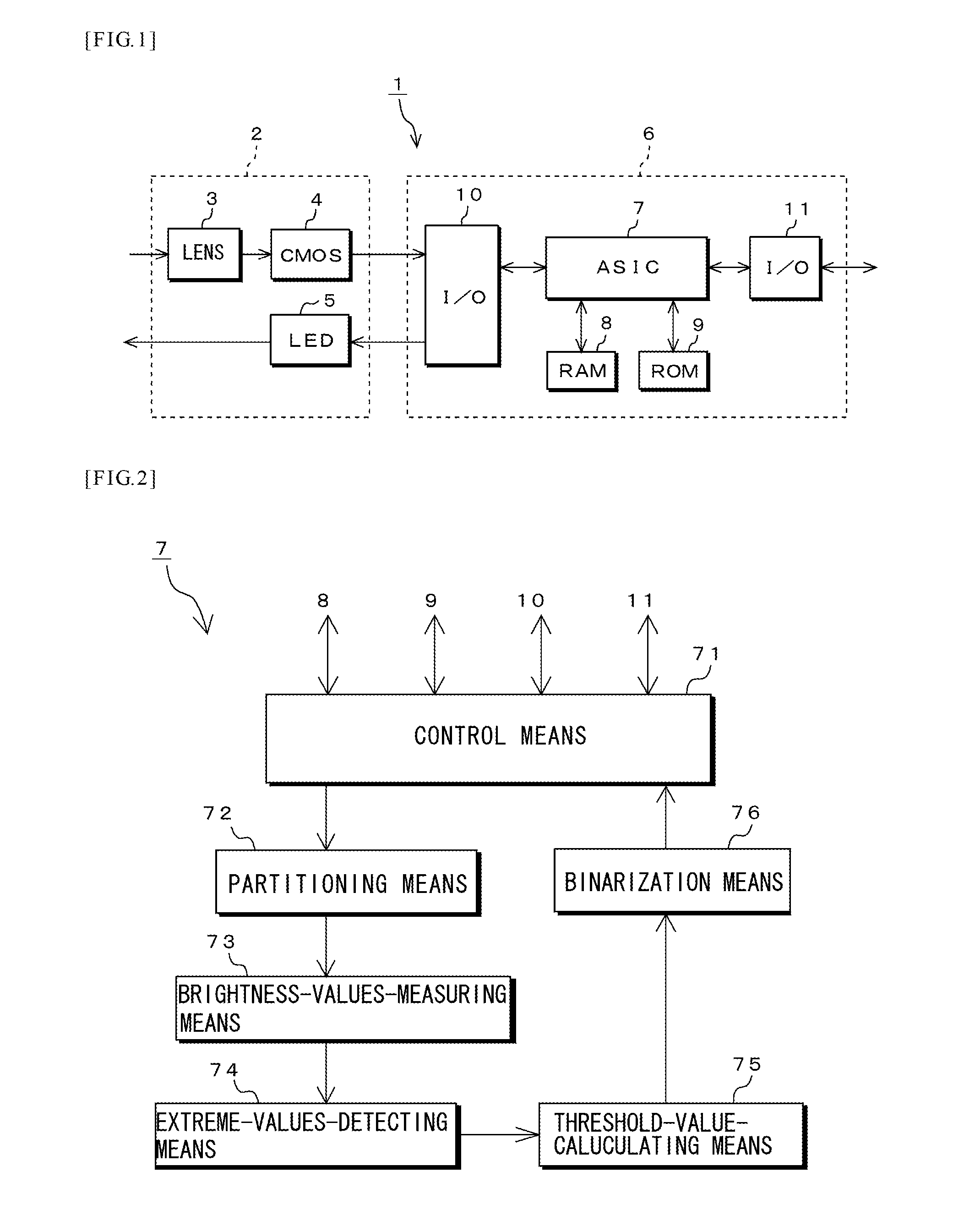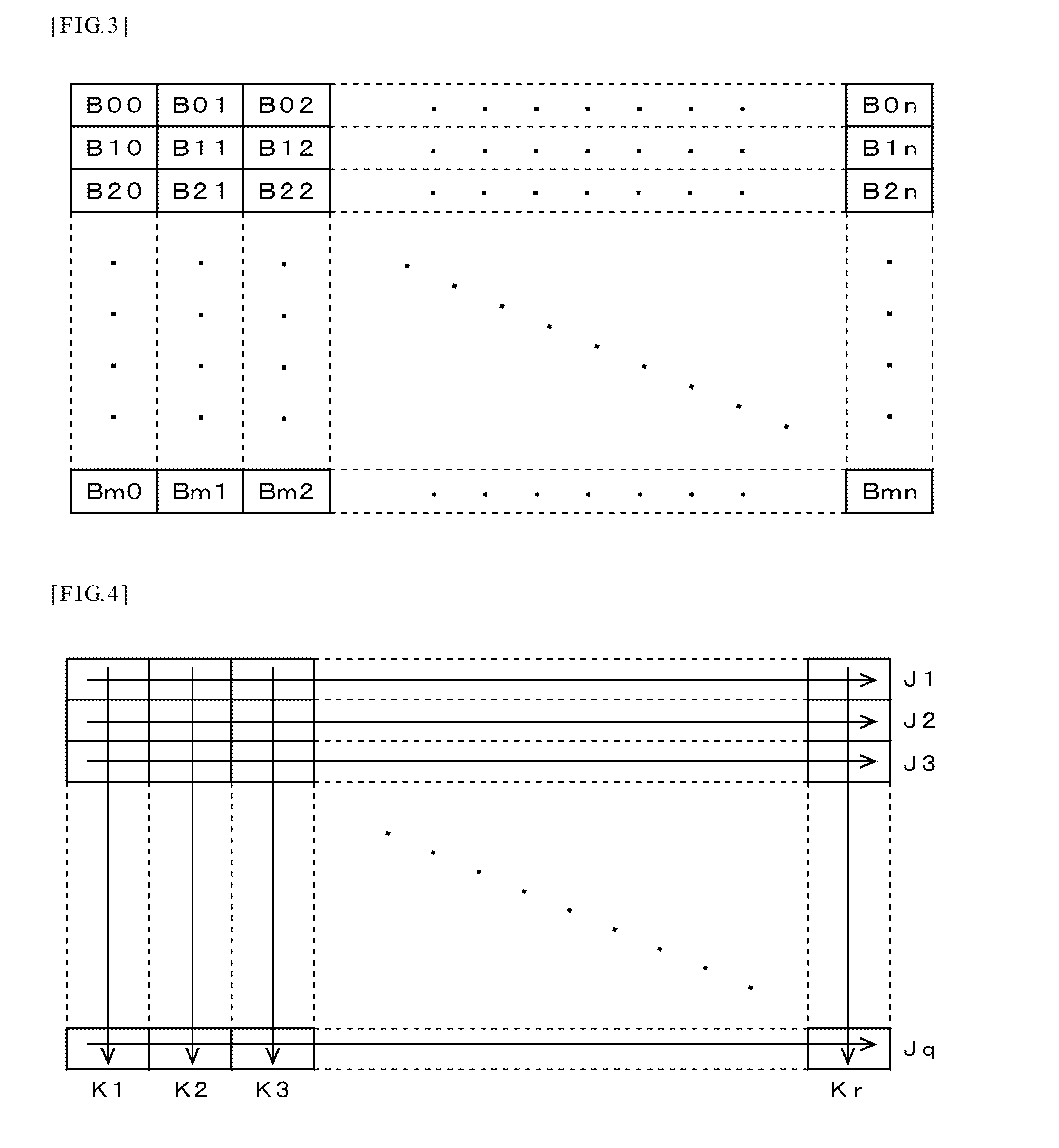Optical Information-Reading Apparatus and Optical Information-Reading Method
a technology of optical information and optical information, applied in the field of optical information-reading apparatus and optical information-reading method, can solve the problems of image recognition mistaken recognition, inability to identify the position of images, etc., and achieve the effects of reliably recognizing images, increasing image processing speed, and recognizing images reliably
- Summary
- Abstract
- Description
- Claims
- Application Information
AI Technical Summary
Benefits of technology
Problems solved by technology
Method used
Image
Examples
first embodiment
Configuration Example of Code Scanner 1
[0041]As shown in FIG. 1, the code scanner 1 according to this embodiment is composed of an optical head portion 2 and a decoder portion 6. The optical head portion 2 is provided with a lens 3 and a CMOS image sensor (hereinafter referred to as “CMOS 4”) which is an example of a solid-state image sensing device. Further, the optical head portion 2 has LED 5 which is an example of optical source.
[0042]The lens 3 is, for example, an optical lens and captures a code symbol, which is an image such as a two-dimensional code, not shown, in the optical head portion 2. CMOS 4 is provided on the lens 3. CMOS 4 images the code symbol that the lens 3 captures, converts the imaged code symbol from analog code symbol data to code symbol data which is represented by a digital brightness value, and outputs it to the decoder portion 6.
[0043]LED 5 is provided near the lens 3. LED 5 is controlled by ASIC 7, which will be described later, so as to be lighted. LED...
second embodiment
[0075]In this embodiment, there will be described ASIC 7A which is provided with an extreme-values-detecting means 74A removing a noise from the brightness values. Since elements having names and signs like those of the above-mentioned embodiment have like functions, the explanation thereof will be omitted.
Configuration Example of ASIC 7A
[0076]As shown in FIG. 8, ASIC 7A according to this embodiment has a control means 71, a partitioning means 72, a brightness-values-measuring means 73, an extreme-values-detecting means 74A, a threshold-value-calculating means 75 and a binarization means 76.
[0077]The extreme-values-detecting means 74A is provided between the brightness-values-measuring means 73 and the threshold-value-calculating means 75. The extreme-values-detecting means 74A has a function to detect the extreme values like the above-mentioned extreme-values-detecting means 74 and a function to remove any noise from the code symbol data captured by the decoder portion 6.
[0078]FIG....
third embodiment
[0090]In this embodiment, there will be described ASIC 7B which identifies the position of the code symbol. Since elements having names and signs like those of the above-mentioned embodiments have like functions, the explanation thereof will be omitted.
Configuration Example of ASIC 7B
[0091]As shown in FIG. 12, ASIC 7B according to this embodiment has a control means 71, a partitioning means 77, a brightness-values-measuring means 73, an extreme-values-detecting means 74A, a threshold-value-calculating means 75 a binarization means 76, an extreme-values-grouping means 77 and a groups-selecting means 78.
[0092]To the threshold-value-calculating means 75, the extreme-values-grouping means 77 is connected. The extreme-values-grouping means 77 counts the blocks partitioned by the partitioning means 72, determines whether or not there is a threshold value in the counted block and if there is a threshold value, groups adjacent blocks, in which there is a threshold value, to generate groups....
PUM
 Login to View More
Login to View More Abstract
Description
Claims
Application Information
 Login to View More
Login to View More - R&D
- Intellectual Property
- Life Sciences
- Materials
- Tech Scout
- Unparalleled Data Quality
- Higher Quality Content
- 60% Fewer Hallucinations
Browse by: Latest US Patents, China's latest patents, Technical Efficacy Thesaurus, Application Domain, Technology Topic, Popular Technical Reports.
© 2025 PatSnap. All rights reserved.Legal|Privacy policy|Modern Slavery Act Transparency Statement|Sitemap|About US| Contact US: help@patsnap.com



